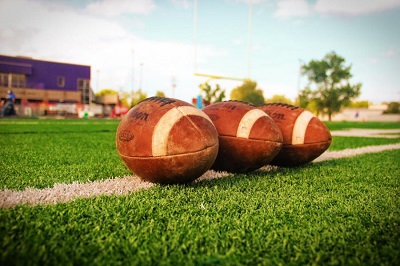Parents: Do You Know Enough About Your Teen Athlete's Sports Supplements?

LOS ANGELES, CALIFORNIA, USA, August 31, 2017 /EINPresswire.com/ -- It’s the start of high school football season and there’s no better time for parents to educate themselves to the dangers of sports supplements teenage athletes might be using as shortcuts to quickly add muscle, boost stamina, and get them more playing time on the field.
The serious health dangers of anabolic steroids are well known. Yet parents who wouldn’t consider letting their child play without a helmet are unaware of the harmful and illegal chemicals hidden inside modern sports supplements pushed by unscrupulous salesmen online and in supplement stores.
“Teens, and their parents, coaches and other adults in their lives, aren’t adequately warned about dangerous supplements and are putting something they don’t really understand into their bodies — and put their health, and even their lives, at serious risk,” said Los Angeles Attorney Robert Tauler, whose firm, Tauler Smith LLP, has successfully put dozens of supplement sellers out of business after taking them to court for selling steroids and other illegal performance enhancement drugs.
The worst are illegal designer steroids called prohormones, intended to chemically mask steroids, and a class of unapproved research drugs known as SARMS. The harmful side-effects of steroids are well known: Liver, kidney and heart failure; liver cancer; high blood pressure; strokes; acne; breast growth in males; impotence and shrunken testes; rage, severe mood swings and paranoia. Steroids also signal teenage bodies to stop growing.
Teenage athletes are also at risk of sudden cardiac arrest by taking re-workout supplements containing powerful stimulants.
Here are some of the most prevalent — and dangerous — substances to look out for in your teen's sports supplements.
PROHORMONES
Designer drugs, prohormones are created in laboratories with the sole purpose of masking illegal steroids. Think of them as Russian nesting dolls, with target steroids hidden within other steroids. They were banned in 2014 by the U.S. Congress under the Designer Anabolic Steroid Control Act.
For example, 1-DHEA was developed specifically to evade federal controlled substances laws by chemically camouflaging the anabolic steroid, 1-Testosterone, inside another banned substance, 1-Androstenediol. A person’s liver first breaks the 1-DHEA down into 1-Androstenediol, which, when metabolized, releases a flood of 1-Testosterone into the bloodstream.
1-DHEA is considered more dangerous than pure 1-Testosterone, because the metabolizing process takes a much larger toll on the liver. Because users also tend to take more 1-DHEA, and for longer periods, in order to achieve the desired results, organ damage is often greatly amplified.
Watch out for: DHEA and 1-DHEA; DMZ (Dimethazine); Methasterone (also known as Superdrol, synthesized by 1950s cancer tumor researchers and never approved for use); Methylstenbolone (Methylsten); Trenovar (masks Trenbolone, a drug that helps cattle gain weight); Halodrol (or CDMA), created by a known steroid producer.
SARMS (Selective Androgen Receptor Modulators)
These synthetic steroids are medical research drugs not approved for human consumption. Some are undergoing clinical trial for possible use in cancer treatment; others were yanked from studies due to their high toxicity.
Watch out for: Ostarine (or Enobosarm) which is still undergoing the rigorous clinical trial process for potential use in fighting some breast cancers; Andarine, investigated for possible use in people with osteoporosis or with enlarged, non-cancerous prostates; LGD-3303 and Ligandrol, also investigated for osteoporosis; and Cardarine, which was being investigated for use in cardiovascular disease but stopped due to sudden and rapid development of cancer in the study animals’ internal organs.
AMPHETAMINE ISOMERS
Pre-workout supplements are popular among teen athletes trying to push themselves to superior performance in the gym or on the practice field, which translates into more playing time during games.
The health risks of amphetamine isomers – chemical kin of amphetamines — include high blood pressure, excessive heart rate (tachycardia), strokes and cardiac arrest. The danger multiplies in supplements that add caffeine and caffeine-like ingredients such as guarana and taurine, commonly seen in energy drinks. The presence of laboratory-made amphetamines is often cloaked on ingredient lists by botanical names, to mislead consumers to believe the stimulant comes from a natural herb or root.
One of the most popular ingredients, DMAA (dimethylamylamine) — often incorrectly referred to as Geranium extract or Pelargonium graveolens extract — was developed by Eli Lily and Co. in the 1940s as a nasal decongestant. The pharmaceutical company withdrew DMAA from the market in 1983. The substance has led to the deaths of athletes and soldiers. It is also banned by all major sports governing bodies. Usain Bolt in January was among those stripped of an Olympic gold medal when the International Olympic Committee disqualified Jamaica’s 2008 4x10 relay team after teammate Nesta Carter’s stored blood tested positive for DMAA.
Look out for: The Texas shrub Acacia rigidula, which in reality is a man-made stimulant known as B-methylphenylethylamine (BMPEA). It has never been tested for safety in human use, and the only “clinical” test on record involved 10 men studied on behalf of the Florida company that makes and supplies the chemical to dietary supplement companies.
Story Credit: https://www.einnews.com/pr_news/401304680/parents-do-you-know-enough-about-your-teen-athlete-s-sports-supplements


